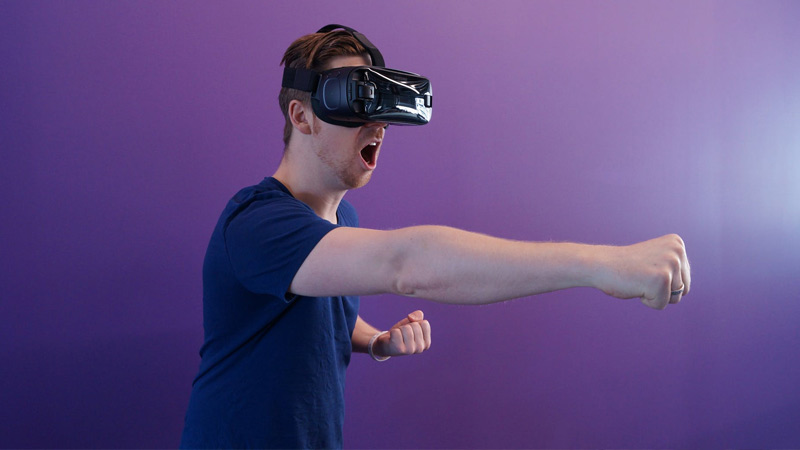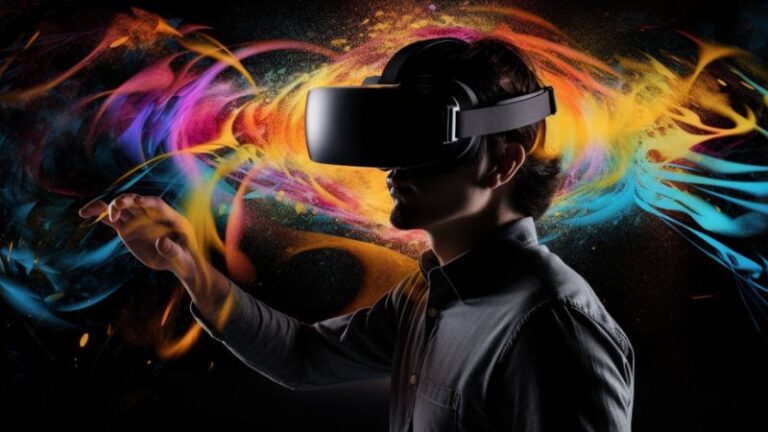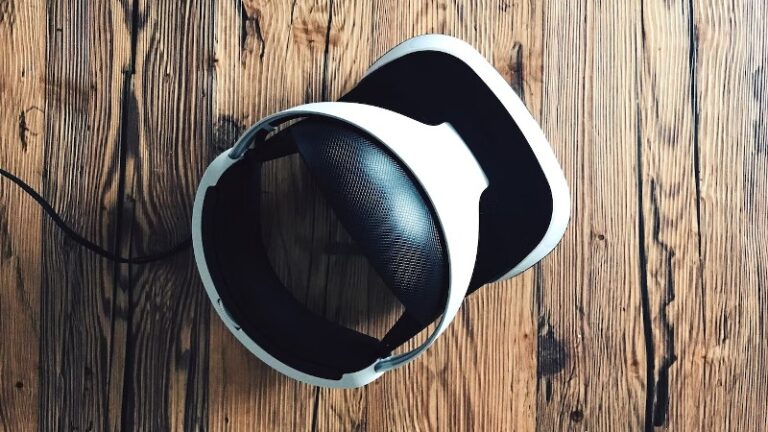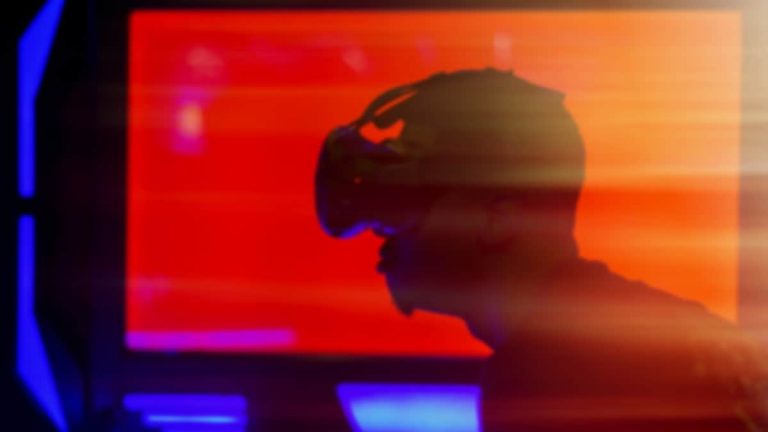Does a VR Headset Actually Feel Realistic?

A virtual reality (VR) headset is a very handy gadget that can lead you into different worlds and let you experience them in the first person. Although it’s most popular as a gaming accessory, a virtual reality (VR) headset can have a lot of other applications, a lot of them being educational purposes in different branches and segments of life. But, despite them being cool and – with time – better and better, we cannot but wonder whether they really feel as realistic as they are advertised or is it still just a good simulation? Well, if you ever asked yourself that question, you’ve come to the right place, as we have the answers you want!
As time goes by, VR headset experience is feeling more and more realistic. But, it is still far from the actual reality and will need a lot more time to pass for a VR headset experience to feel fully realistic.
Furthermore, the answer to that question is actually somewhat subjective. It depends from person to person, so we suggest you give a quick look at the history of VR headsets because it will give you a sense of how they can change and further improve. Also, we explained our answer about the reality of VR below.
The Evolution of the Virtual Reality (VR) Headset

The first commercial virtual reality (VR) headset, the Sega VR, announced back in 1991 and debuting in early 1993, was never actually released for consoles, but was used for the Sega VR-1 motion simulator arcade back in 1994. Another early virtual reality (VR) headset, the Forte VFX1, was announced the same year (1994); the VFX-1 has stereoscopic displays, a 3-axis head-tracking, and stereo headphones, which was pretty revolutionary for the time.
Sony, another virtual reality and gaming pioneer, released the Glasstron in 1997; it had an optional positional sensor, allowing the wearer to view the surroundings, with the perspective moving as his head moves, giving a deep sense of spatial perception, something that all modern headsets have. These VR headsets gave MechWarrior 2 players a new visual perspective of seeing the battlefield from inside the cockpit of their craft, which was a breakthrough in gaming at the time.
However, all these early headsets failed commercially due to their limited technology, and they were described by John Carmack as “looking through toilet paper tubes”. It took almost 20 years for virtual reality (VR) headsets to enter the spotlight again.
In 2012, a crowdfunding campaign began for a VR headset known as Oculus Rift; the project was led by several prominent video game developers, including Carmack. The headset was in development for four years before the final commercial release of the Oculus Rift began shipping in early 2016. Still, the product never became a hit for the company.
In March 2014, Sony demonstrated a prototype headset for the PlayStation 4, which was later named PlayStation VR; the PlayStation VR console soon became commercially available and is now an accessory to the PlayStation franchise with several games already released as of 2020.
That same year, Valve demonstrated some headset prototypes, which lead to a partnership with HTC to produce the Vive, which focuses on “room-scale” VR environments that users can naturally navigate within and interact with from the comfort of their homes, without needing additional space. The Vive was released in April 2016 and PlayStation VR in October 2016.
Virtual reality headsets and viewers have also been designed for smartphones. Unlike headsets with integrated displays, these units are essentially enclosures that a smartphone can be inserted into. VR content is viewed from the screen of the device itself through lenses acting as a stereoscope, rather than using dedicated internal displays.
Google released a series of specifications and associated DIY kits for virtual reality viewers known as Google Cardboard; these viewers are capable of being constructed using low-cost materials (and a smartphone with a gyroscope), such as cardboard (hence the naming).
Samsung Electronics partnered with Oculus VR to co-develop the Samsung Gear VR (which is only compatible with recent Samsung Galaxy devices), while LG Electronics developed a headset with dedicated displays for its LG G5 smartphone known as LG 360 VR. Asian hardware manufacturers like Xion and Kolke have developed inexpensive virtual reality headsets.
In 2017, Chinese company Tencent announced it was preparing to launch its virtual reality headset that year.
As of 2019, Oculus and PlayStation VR dominate the VR headset market.
In June 2019, Valve released their own headset, the Valve Index, without a partnership with HTC.
Does VR Feel Realistic?

Well, the answer to this question is really not straightforward and is, in a lot of ways, subjective. It is not like reality, not fully at least – that much you can be sure of. But how good is it actually?
Well, the VR headsets have evolved with the years and they have now become a truly revolutionary piece of technology that can take you practically anywhere. They have games where you actually walk and move like in a real-world or just simulated drives/rides that will give you a very realistic experience.
The fact is that the developers have put in a lot of effort to take you into a specific, simulated world and a lot of what you see – although not real, feels very real.
The thing is, VR headsets actually just give you a visual representation of the simulated reality; other elements – such as smell, touch, etc. – are still not present, so this reduced the general realism a lot but is also a very big field where virtual reality headsets can be improved.
Certainly, this may seem like a redundant remark, but it is certainly reasonable to say that a lack of other senses reduces the level of realism of the simulated reality.
But as far as the visual elements go, most headsets really do feel very realistic and the improvements made by the developers in recent years have really done a lot in that field. The worlds do seem like video games, that much is relatively obvious (although some rides are even more realistic), but your experience of those 3D worlds is very realistic.
They have done as much as possible to really “throw you into” those worlds and make you feel as if you were really there. The experience can be overwhelming, especially if you’re prone to seizures (which is why you have to take the necessary precautions), and it can even “trick” your brain into believing you’re really there. Some ride simulations can even cause nausea, which is why taking an antiemetic is recommended if you’re prone to motion sickness.
So yes, as you can see, these headsets are good enough to trick your brain, and although the experience itself might not feel as real as reality itself (when considering the subjective perception of the simulated reality), it is real enough to trick your brain.
As far as the subjective element is concerned, you might feel like you’re experiencing the sea from inside a scuba diving mask, but most things still feel very real and whether or not you’re fully experiencing the realism, it is certainly going to be a very interesting and unique experience.
This covers our analysis of the topic for today. For more information, keep following us and stay tuned for more of the same.





